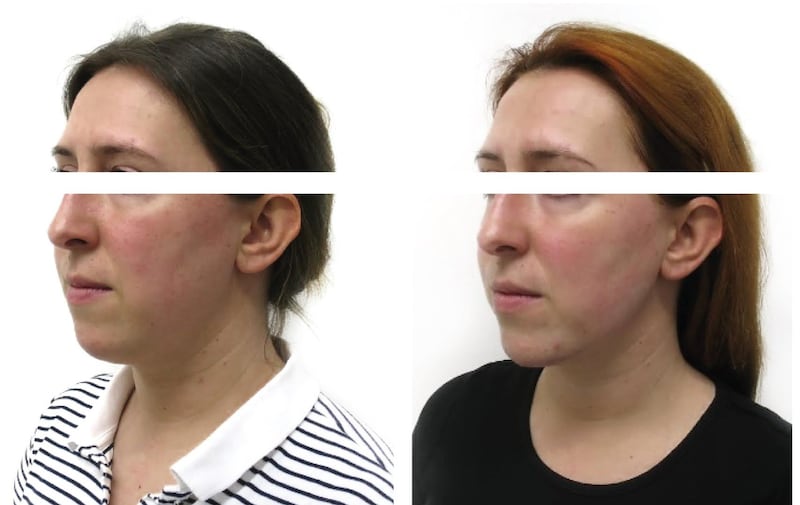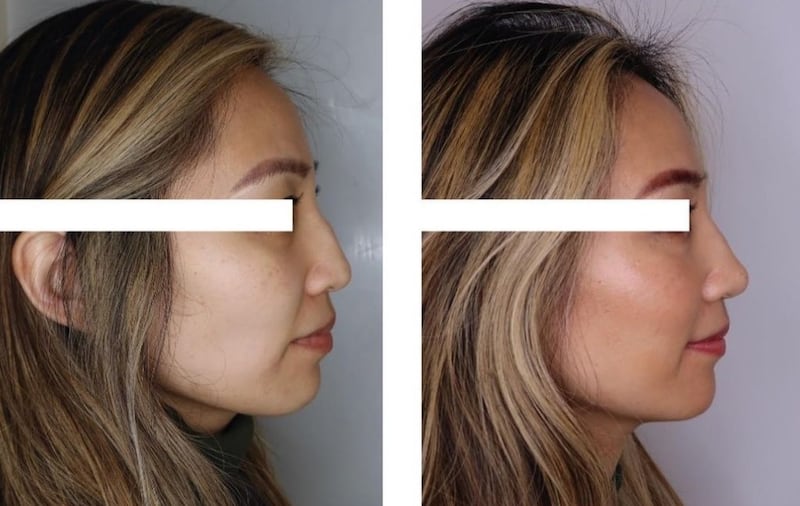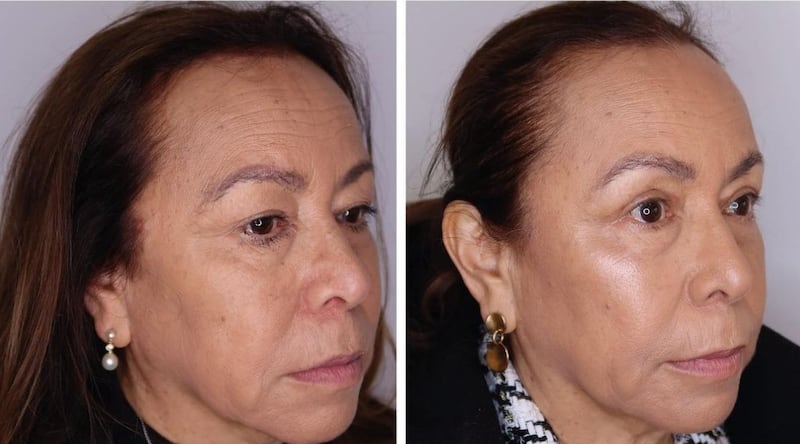From tweakments to transformations, cosmetic procedures are intended to alter how we look. How we travel? That’s not usually part of the plan.
Yet that was the case for recent passengers travelling via Dubai, as they failed to make it through departures, with security citing their passport pictures didn’t match their appearances. Luckily, nothing nefarious was at play, as recent cosmetic surgery was the culprit – and it's not the first incident.
In October, TikTok persona Joanne Prophet spoke to followers about how her transformation had caused her transport issues. She said: “Finally updated my passport pic after getting interrogated every time I fly because apparently this doesn't look like me.”
@joanneprophet That time i got interegated by 6 members of passport control 😅😅😅
♬ original sound - Joanne Prophet
Earlier that year, fellow TikTok user Tomi Grainger was stopped at Sydney International Airport, and later revealed: “Then it dawns on me: I no longer look like the person in that picture because I’ve had so much plastic surgery.”
But how much plastic surgery is too much as far as airport security is concerned?
Crafting facial signatures: how biometric security works
Airports worldwide increasingly rely on biometric technology to streamline the passport control process. If you’ve passed through Dubai International Airport recently, as 87 million passengers did last year, you’ll know eGates can scan their way through more travellers in a shorter time than officials at the gate.
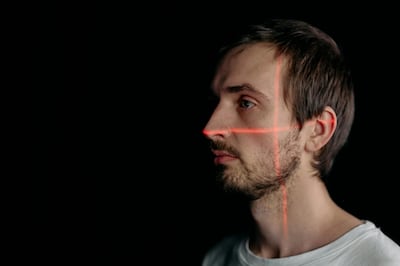
This means passengers are increasingly identified via facial recognition software. Analysing an individual's features and bone structure, the technology creates a “unique facial signature to accurately identify and verify people”, explains Sadi Vural, chief executive of global face technology company Ayonix.
Each signature is composed by studying three key metrics that come together to create a face: the shape of landmark features such as eyes, nose and mouth; distances and boundaries referred to as local features, such as width between eyes; and the holistic features, or how all the pieces of the puzzle come together.
Once this signature is created, any procedure – or collective procedures – that alter the “overall face geometry” can pose a challenge to people and technology alike, says Vural.
Changing facial geometry: Confusion at passport control
“Cosmetic surgery that plays with the eye area and the height and shape of the nose can significantly affect face recognition accuracy,” Vural explains. “Any changes on skin texture do not.”
But what do surgeons working on carrying out such treatments have to say? Dr Maurizio Viel, a plastic surgeon at the Cornerstone Clinic in Dubai, flags four procedures to be mindful of.
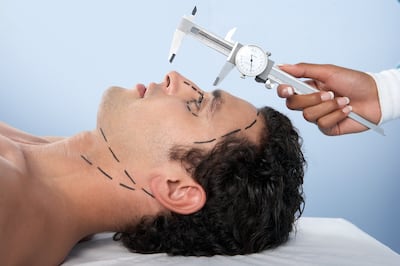
Jaw (orthognathic) surgery
Essential to the structure of the face – or the landmark features – jaw surgery is a procedure to be mindful of. Dr Viel explains: “This is performed to correct conditions of the jaw and face related to structure, growth, sleep apnoea, TMJ [temporomandibular] disorders, malocclusion problems owing to skeletal disharmonies, or other orthodontic problems that cannot be easily treated with braces.”
Nose (rhinoplasty) surgery
Nose surgery can alter a patient's appearance to the naked eye and to AI technology. Dr Viel explains that, while it is often a cosmetic with subtle results, it's still worth being mindful of how slight changes can be read differently by facial scanners.
Craniofacial surgery
This refers to surgeries on the face and skull, which are usually undertaken to “correct congenital abnormalities or trauma-related injuries”, rather than cosmetic changes that, by their nature, often result in visible results.
Significant weight-loss procedures
“Although not a facial surgery, significant weight loss, especially if achieved rapidly through bariatric surgery, can drastically change one’s facial features,” explains Dr Vedi. Jawline and cheekbones may appear more prominently, which could potentially misguide biometrics determined from a previous face scan or picture.
Can injectables and other tweakments impact your passport?
As biometric data mostly maps fixed points on the face that are difficult to reshape, changes to “fleshy areas” shouldn't create issues for jet-setters, says Dr Vedi.
However, that doesn't rule out all Botox, fillers, or likewise treatments from the watch list.
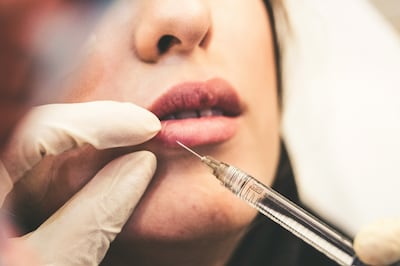
“Injectables and filler procedures can certainly affect the proportions and anatomical landmarks of certain areas,” says Dr Ashwin Soni, plastic surgeon and founder of The Soni Clinic. He adds that this can confuse security personnel and software at passport security.
“Nose, eyes and mouth are all taken into consideration when your face is being scanned, therefore if they are dramatically changed, the contours and proportions of your face can also change,” he explains.
How common this issue truly is – despite recent news stories – is more up for debate. Dr Soni stresses that most surgeons strive for natural-looking results, and that's exactly what the majority of patients book in for.
“It is our responsibility to guide patients in an ethical and honest manner," he adds. "I think it is important to set realistic expectations.”
Dr Viel echoes the sentiment, adding: “We have never had a patient change a passport after surgery in the 25 years that I have been a surgeon.”
Future of passport security in the age of cosmetic surgery
As international travel and image-altering surgery rise alongside technological advances, it is time to rethink how we identify people.
Patrick Bixby, author of License to Travel: A Cultural History of the Passport, explains that passport identification is constantly evolving – with photographs being introduced after security concerns during the First World War – and in this age, it's our physical appearance that rules.
He says: “While modern passports are supplemented with other identifiers – such as fingerprint, iris, and even facial scanning – it is important to remember that it is our bodies, our physical appearance, that must match the document, not the other way around.
“In other words, the documentation is the authoritative piece. Cosmetic surgery will place a burden on passport holders to update."
For those wondering if new technologies will take over the photograph's reign, Bixby reassures that “the future is already here”.
He cites the Smart Gates in Dubai, where residents can pass through eGates using fingerprints or iris scans to match the passenger's identity, and ongoing developments of a Known Traveller Digital Identity programme, bringing “biometric authentication, blockchain technology and identification databases” together, which could be used worldwide.
Supporting this, Vural reveals his company is busy “developing advanced facial recognition technology that is unaffected by cosmetic alterations”, which includes “incorporating a larger data set of training face models, including before and after-surgery images, which will further reduce the effects of cosmetic procedures on facial recognition”.
When looking for an easy test to see if it's time to update your passport after a cosmetic procedure, Dr Soni suggests: “An iPhone can often be used as an indicator by using Face ID as a test.”
If you've had to update your phone's Face ID after surgical procedures, it's likely time to update your passport.
